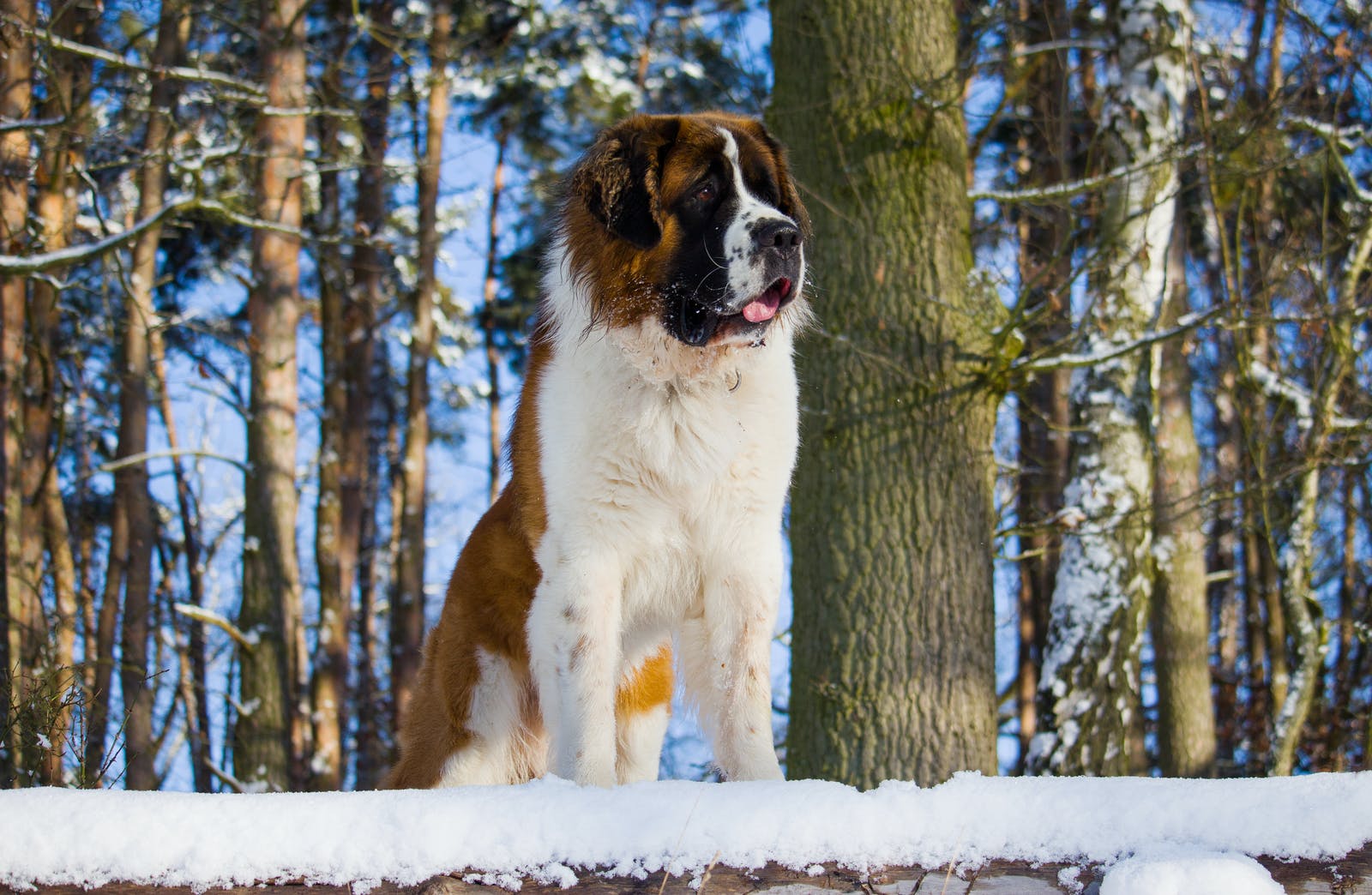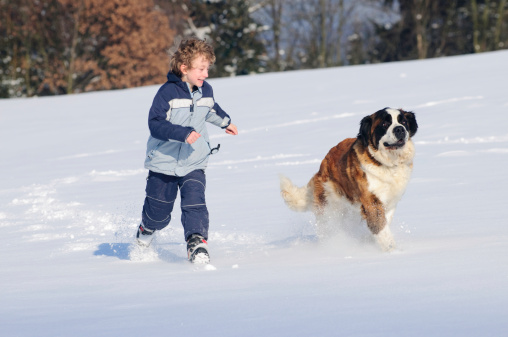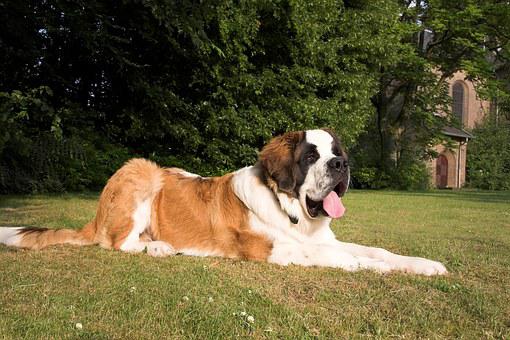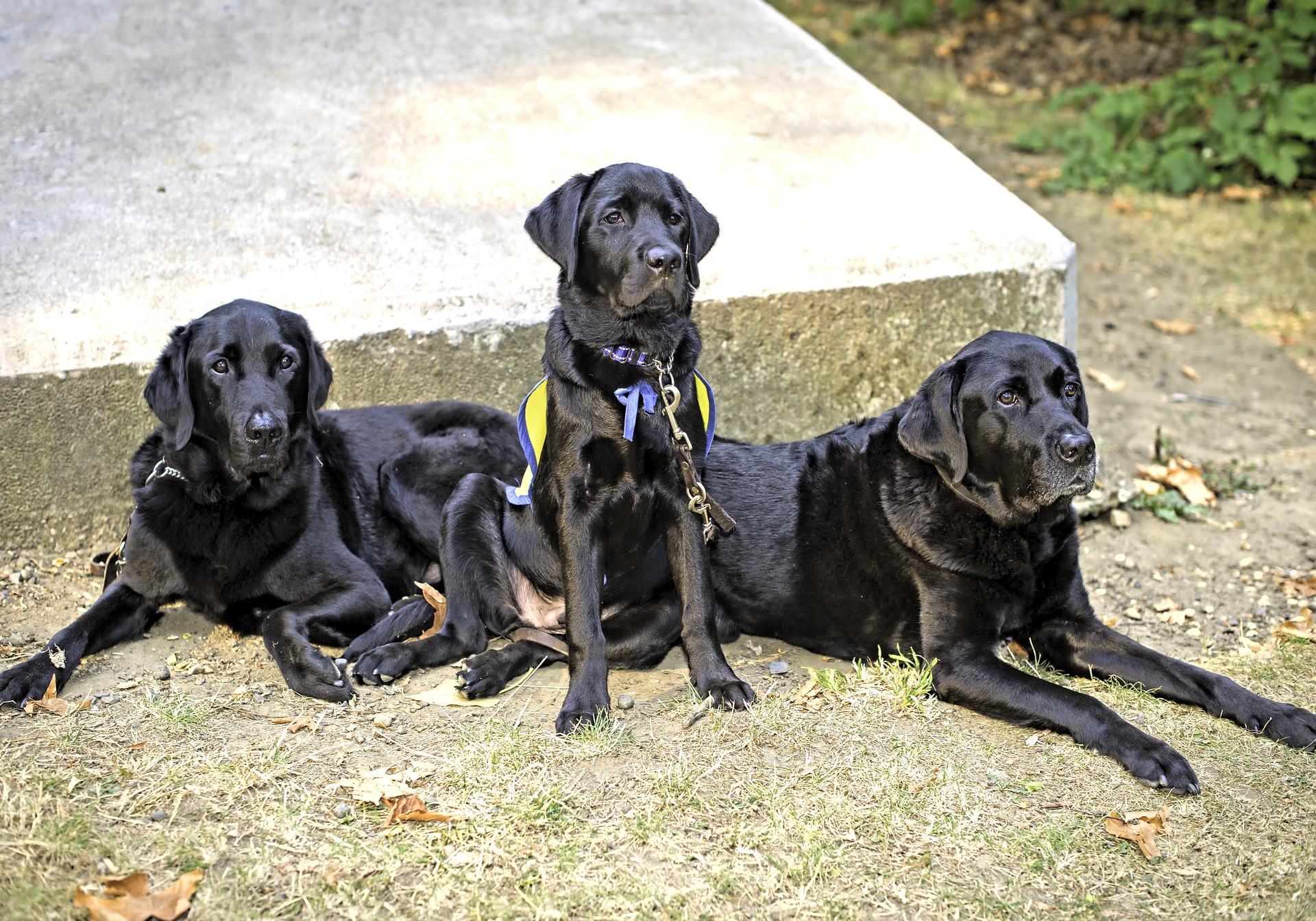
What makes a dog a good dog, especially if he/she will be trained as a service dog? Typically, certain traits such as “friendly personality”, “intelligence”, “calm demeanor”, and “trainability” come to our minds. However, breed characteristics like size, energy level, need for exercise and mental stimulation, shedding and drooling level, as well as how the dog would suit the owner’s lifestyle in general should also be considered prior to choosing a dog breed. Some people are still biased against too small or too large breeds, as these may seem either too dangerous and/or incapable of performing tasks as service animals.
Talking about breeds of different sizes, we would like to direct your attention towards a large breed, that you may have heard a lot about Saint Bernard. Are these big fluffy paw fellows able to become good service dogs or not, this is the topic of today’s article.
Let’s start with an explanation of the term “service animals”.
What Are Service Animals?
Service animals are dogs individually trained to do work or perform tasks directly related to a person’s disability, whether physical and/or mental.
For example, if a person has mobility impairments, a service dog can be trained to help them remain on their feet and keep balance, pull a wheelchair, retrieve items...etc. If a person has a mental disability, a service dog can be trained to perform Deep Pressure Therapy, and tactile stimulation, help them keep distance while in crowded places, or otherwise reduce the emotional overload. Service dogs do not provide comfort and companionship only, but perform specific tasks related to a disability.
Are There Breed Restrictions
The American with Disabilities Act (ADA) prohibits service animals to be discriminated against based on their breed or any assumptions about how the animal might behave. So, if you decide to train a Saint Bernard as a service dog, he/she may not be prohibited based on his/her size only.
However, having a service dog of a large breed might cause some troubles, i.e. in case he/she does not fit under the seat of the handler on the aircraft, he/she may need to travel in a kennel and eventually be accommodated in the cargo area. Also, according to the ADA businesses and organizations must provide reasonable modifications to their policies to accommodate a person with a disability accompanied by a service dog. However, if the presence of the service dog, leads to a fundamental alteration of the nature of the services or goods offered, his/her presence might be prohibited.
Although having a service dog of a large breed may cause some challenges, this does not mean that large canines can not become great service animals! Since you already know more about service dogs, let’s take a look at some essential breed characteristics of Saint Bernard.

History
Saint Bernard originates in the Western Alps in Switzerland and Italy. It is a type of working dog, that was initially bred by the hospice of the Great St. Bernard Pass on the Swiss-Italian border, to rescue people. The hospice is likely to have acquired the first representatives of the breed in the mid-17th century (between 1660 and 1670).
Physical Features
The breed representatives can reach up to 90 cm in height (for the males) / and 65-80 cm (for the females). The weight that these giant fluffy balls can reach is up to 82 kg (sometimes even more) for males and 64 kg for females. The average lifespan of the breed is 8-10 years. The Saint Bernard dogs have a muscular physique and coat that can be colored in white and red, white and brindle, or white and brown. Their ears are soft and floppy and their eyes are droopy.
Temperament & Personality
The breed representatives became popular thanks to their calm and patient demeanor and friendly personality. They are known as gentle giants, who get along with people, both adults and children, which makes them great family dogs. Also, they get along with dogs and other animals as well. They are not known for being aggressive, however, proper socialization at a young age is always recommended. Due to their large size, owners may need to train their paw friends as early as possible, to avoid any control issues (even for a strong adult) in the future.
These canines are overall affectionate and eager to please their owner. When properly socialized they are also friendly towards strangers. Patient, understanding, and tolerant, the Saint Bernard can become very protective towards his/her beloved humans. Hence, these dogs are among the most suitable guard dog breeds.
Adaptability
You may wonder whether it is a good idea to raise such a large dog in an apartment or not. In general, we would say, that this is not the best idea... However, if you can set up an area at home where your dog can comfortably stretch and relax, and train him/her at a young age, you might be able to do it! The breed representatives have a low-moderate energy level, which will require moderate exercise.
When it comes to adaptability and tolerance for being left alone, some issues might occur. If you are about to leave your dog for about 3-4 hours, this would be fine. However, the desire of these dogs to be with their owner and other family members might lead to developing separation anxiety, which needs to be addressed at an early stage. Since the breed was originally bred to rescue humans, the dogs worked closely with humans, there is no wonder if your doggy shows a tendency to be a bit clingy.
The breed’s tolerance towards the temperature of the environment is also something you should consider. These dogs can tolerate cold weather, as they originate in the Alps, however, they are not likely to feel well when temperatures are high.

Intelligence
The breed representatives are known for their emotional intelligence and ability to understand human emotions and sense any behavioral changes. This ability makes them suitable not only as mobility service dogs, due to their large size, but also as Psychiatric Service Dogs and companion animals.
Trainability
Saint Bernards are easy to train, and known to respond well to positive reinforcement. We would not recommend that you punish your dog if he/she is a bit stubborn while still a pup. Be patient and reward your fellow when he/she does the right thing.
Occasionally these canines may show some shyness and stubbornness, however, when properly trained, they can overcome these issues. As mentioned above, they have low to mid-energy levels, but you still should take care of their physical health and keep them engaged in moderate exercises.
Shedding
The breed representatives do shed. If you can not tolerate dog's fur on your furniture or clothes, this breed might not be the most suitable one for you. These giant fluffy balls shed excessive twice a year-during the spring and the fall.
Drooling
These dogs as well as other large breeds such as the Great Dane and the Mastiff are prone to drooling, so you may need to keep the temperature in your paw friend’s area a bit lower than the other areas at home. Also, do not take him for walks during the hottest time of the day.
Costs
When bought from a breeder, the average cost of a Saint Bernard puppy is between $600 and $2000. It is about $1000-$1500 in the US. A fully-grown representative of this breed is likely to cost you about above $2000 on an annual basis. Food, supplies, and medical fees are included. You should keep in mind that these strong and large dogs can eat up to 6-7 cups of food per day.
We would say that Saint Bernard can become a great service dog, both for physical-related and emotional-related tasks. When properly trained and socialized, these dogs can become your most loyal friend and guard. However, not all people can handle a dog of such a large size and be able to properly take care of him/her.














